Intro
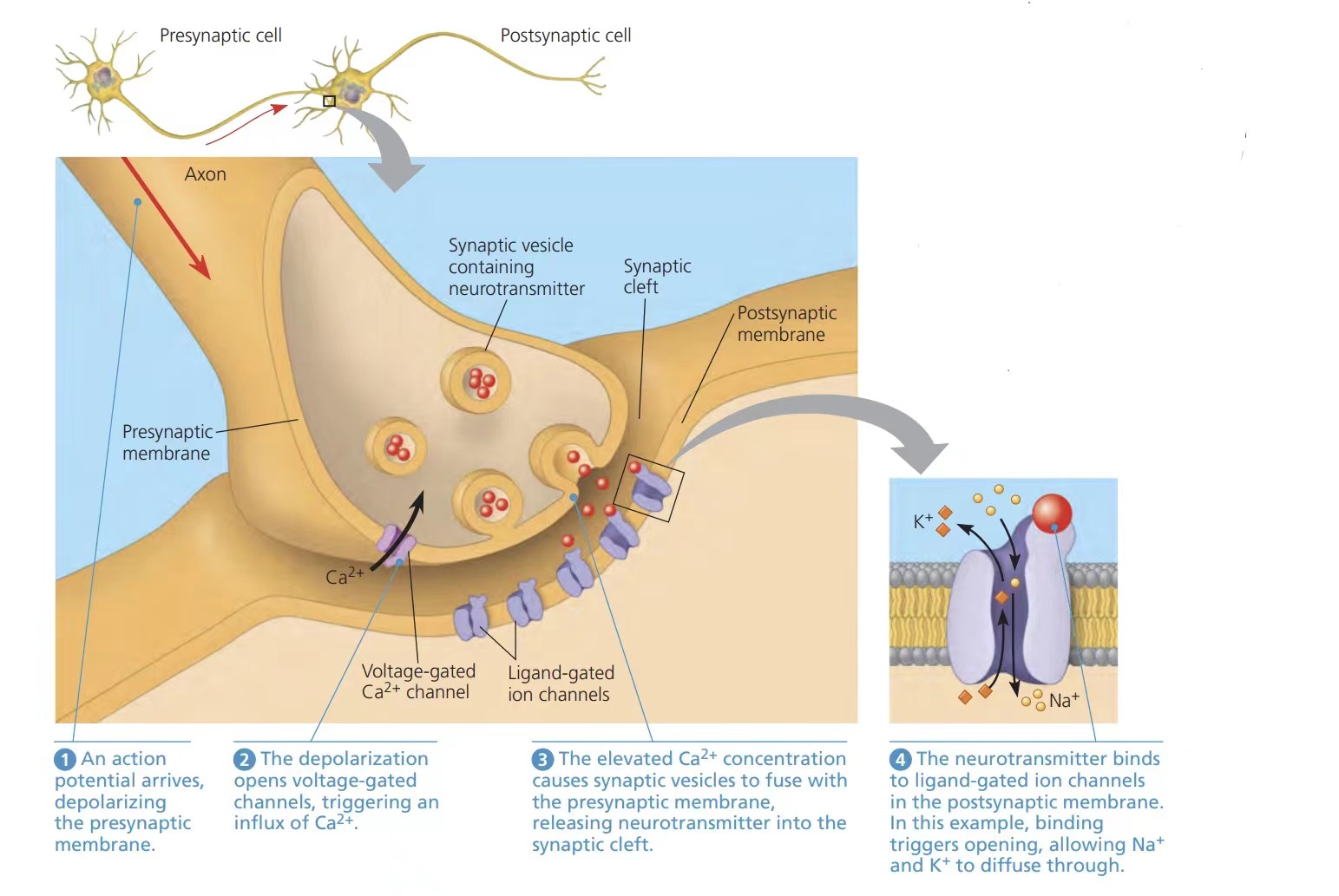
When designing SUPERSMEST, we were inspired by action potentials in neurons. Action potential refers to the process of spreadable potential change generated on the basis of resting potential when excitable cells are stimulated. In simple terms, it also means that ions are transported inside and outside the membrane through active and passive transport. However, we found that it is difficult to simulate ATP-driven enzymes in vitro, and consuming energy before generating it is not in line with our original intention. Therefore, we decided to use the idea of concentration difference to develop a device that can produce energy.
Check out our introduction video on Youtube! Users whose IP address located in China Mainland may be unable to load this video.
Introduction Video
Work

SUPERSMEST is a fascinating device that can generate electricity from the natural difference in ion concentration between seawater and freshwater, and it’s one of the most promising technologies for sustainable energy.
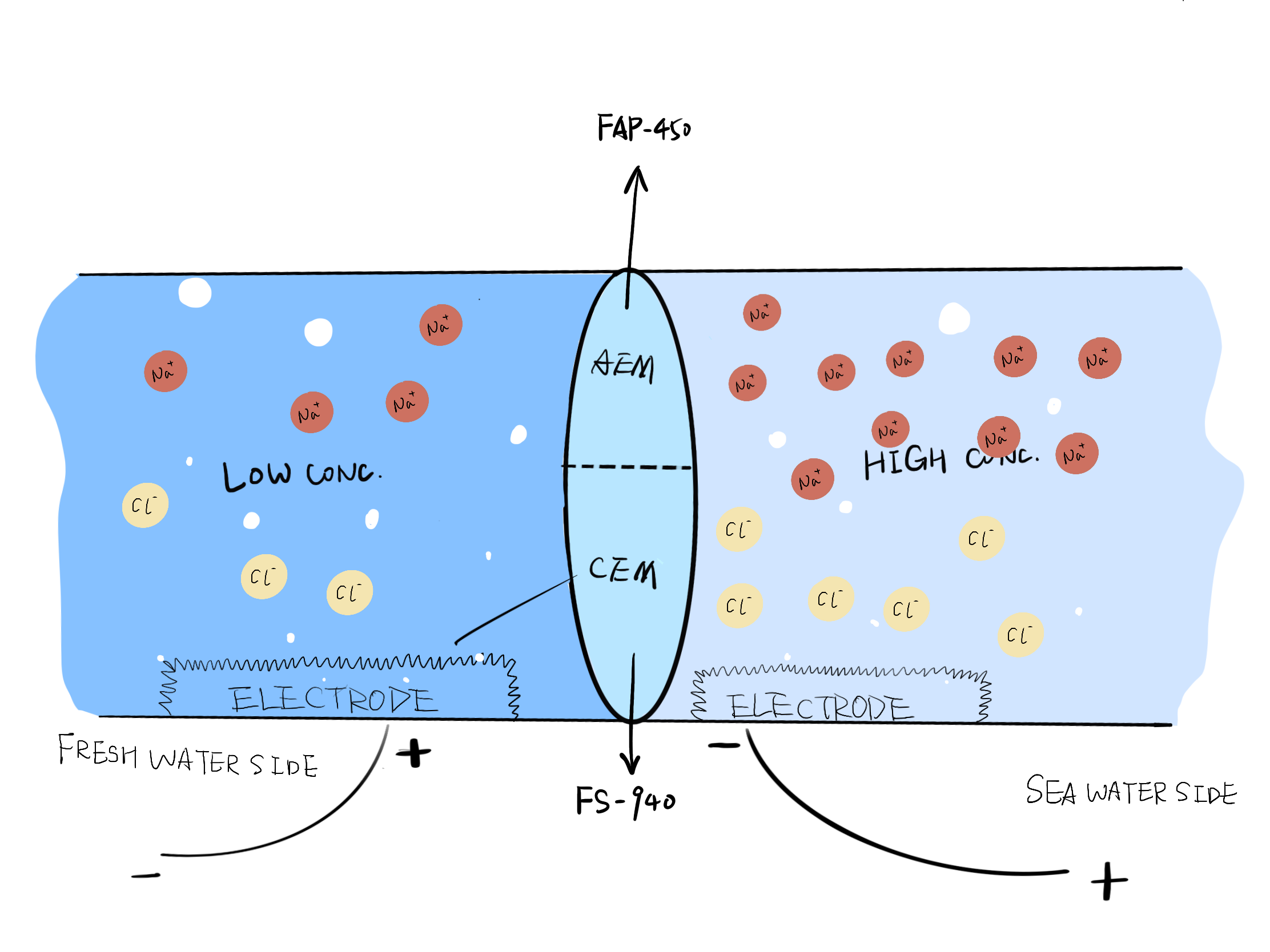
The SuperSMEst concentration cell is composed of two chambers, each containing a solution of Na+ and Cl- ions. The chambers are separated by a high-tech membrane that allows only certain ions to pass through. One membrane is called FAP-450, and the other is called FS-940. These membranes are specially designed to create a voltage difference between the two chambers.
The SuperSMEst concentration cell works by placing it underwater, where there is a natural gradient of ion concentration. The seawater side has a higher concentration of Na+ and Cl- ions than the freshwater side. This causes the ions to move across the membranes, and electrons to move in the wire creating an electric current. The current can then be stored in batteries or used to power various devices such as underwater ROVs.
The concentration cell is a remarkable invention because it uses the power of nature to generate electricity. It does not produce any harmful emissions or waste, except for its membrane that can be reused, and it only depends on the temperature of surrounding water, which will be enough for all seasons during the year. It can operate continuously and reliably, as long as there is a difference in salt concentration which will be obtained through another membrane filtering seawater.
The concentration cell is not only a scientific marvel, but also a potential solution for the global energy crisis. It can provide clean and renewable energy for millions of people around the world, especially in remote areas where access to electricity is limited or expensive. It can also reduce the dependence on fossil fuels and lower the greenhouse gas emissions that contribute to climate change.
In short, the concentration cell is a testament to the ingenuity and creativity of human beings, who can harness the power of nature to create a better future for themselves and the planet.
Check out our data and calculation of costs and voltage!
About

The origin of the team name and our product title "Supersmest", cames from the abbriviation of (SUPER) (S)ustainable (M)embrane (E)nergy (ST). Pronounce it as /ˈsuːpərsmest/.
Our team leader, Eva Lu, first identified the general direction of the product we wanted to actually produce - energy, which is the intersection of biology, chemistry and physics. The action potentials of neurons give us the inspiration to increase the use of green energy by utilizing concentration differences to generate electricity. She found outstanding students in the class who excelled in these areas. In addition, the IT support, Qiao Yang who could make websites was found. In the construction and invention stage, Ziyi Shen was responsible for and cost calculation and the construction of the ion-permeable membrane; Xiang Meng is responsible for the calculation and application of the power production, and Mincheng Ma was responsible for the construction of the filtration membrane. Eva Lu completed the model construction using 3D modeling technology and was responsible for the marketing and economic content.
I met a traveller from a distant shore,
Who said -- “Two chambers filled with salt and water
Lie in the ocean. . . . Near them, on the floor,
A membrane separates the solutions, whose power,
And voltage difference, and flow of electric charge,
Tell that its inventor well those forces harnessed
Which yet sustain, impressed on these ingenious things,
The hand that made them, and the mind that blessed;
And on the device, these words appear:
My name is Concentration Cell, King of Cells;
Look on my Works, ye Mighty, and revere!
Nothing beside remains. Around the sway
Of that colossal Cell, boundless and fair
The waves and currents dance and play.”
Model
It takes about 45 seconds to load the model for the first-time visitors of our website.
If you still didn't see anything below on your PC after 1 minute, reload the page.
If you still don't see anything, download our glTF model and upload it to this website to view our model.
The model above did not load textures due to technological limitations. Below is the rendered (with texture) model which is only availible on computer softwares.
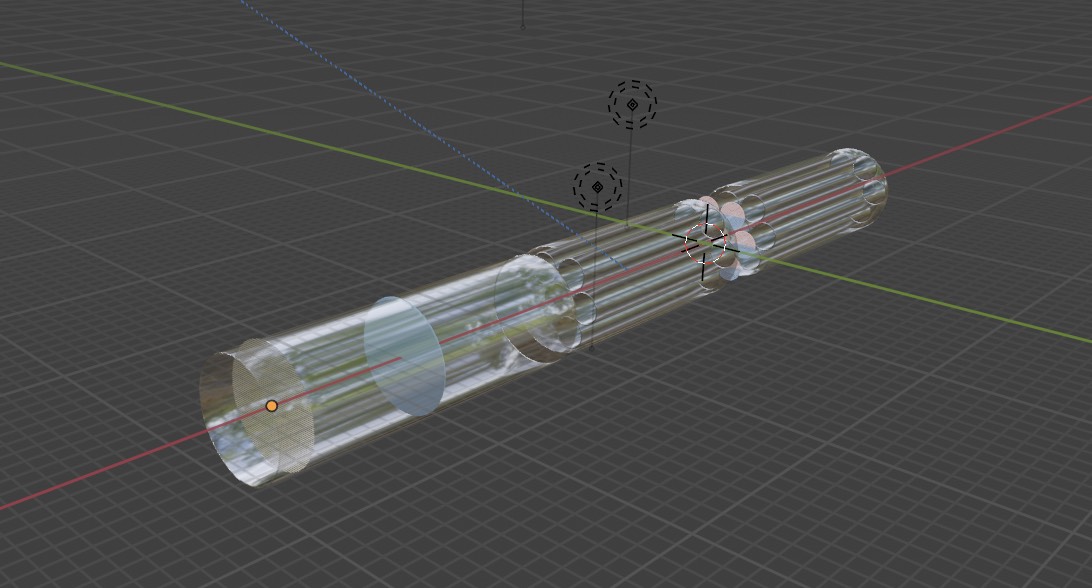
The model and the image may seems confusing, and here is an annotated graph of the structure. You can go to our introduction video for more information.
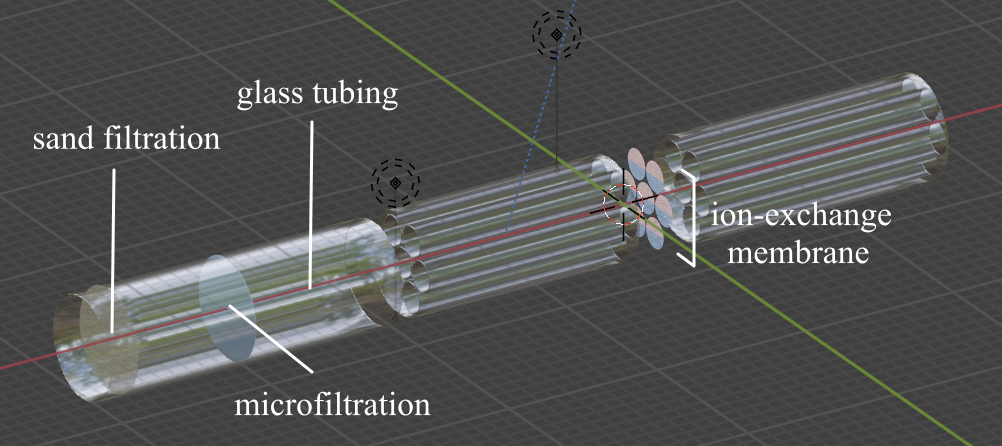
Contact
Data
Jump to the calculation of membrane cost
Background Information
The Nernst Equation
The potential energy generated by the concentration cell can be calculated using the Nernst equation as follow:

Where R is the ideal gas constant (8.314 J/K*mol) and T is the temperature in Keivin. Qr is the reaction quotient equals to
 In a concentration cell,
In a concentration cell,

The cell potential E associated with the electrochemical reaction is defined as the decrease in Gibbs free energy per coulomb of charge transferred, which leads to the relationship

Where F is the Faraday constant (96,485.332 C/mol) and z is the number of electrons transferred in the reaction, putting (1) and (2) together, we get:

Water Temperature
Figure 1
Water Temperature at Different Depth in the Sea
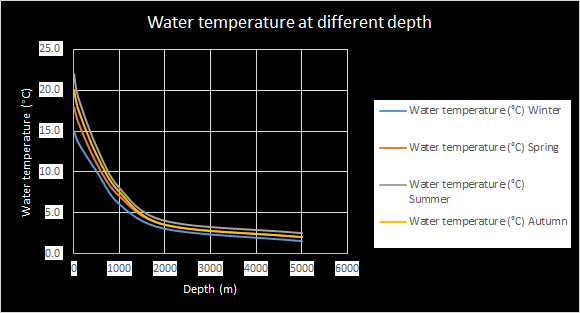
Figure 1 shows that the water temperature is higher at the surface of the sea, and since the surface can also more reachable and the pressure will be lower, therefore, the surface of the water will be the optimal option. We can take the average temperature at the surface which will be 18.75 degrees Celsius. The potential voltage of the cell will vary depending on the season and depth under water.
Concentration of the Ions
Table 1
The Concentration of Na+ and Cl- in Seawater and Drinking water (mol/L)
| |
Na+ |
Cl- |
| Seawater |
0.468 |
0.546 |
| Drinking Water |
0.00026 |
0.00022 |
Cell Status
Voltage Calculation
Using the number on the table, we can estimate the potential voltage of this cell:
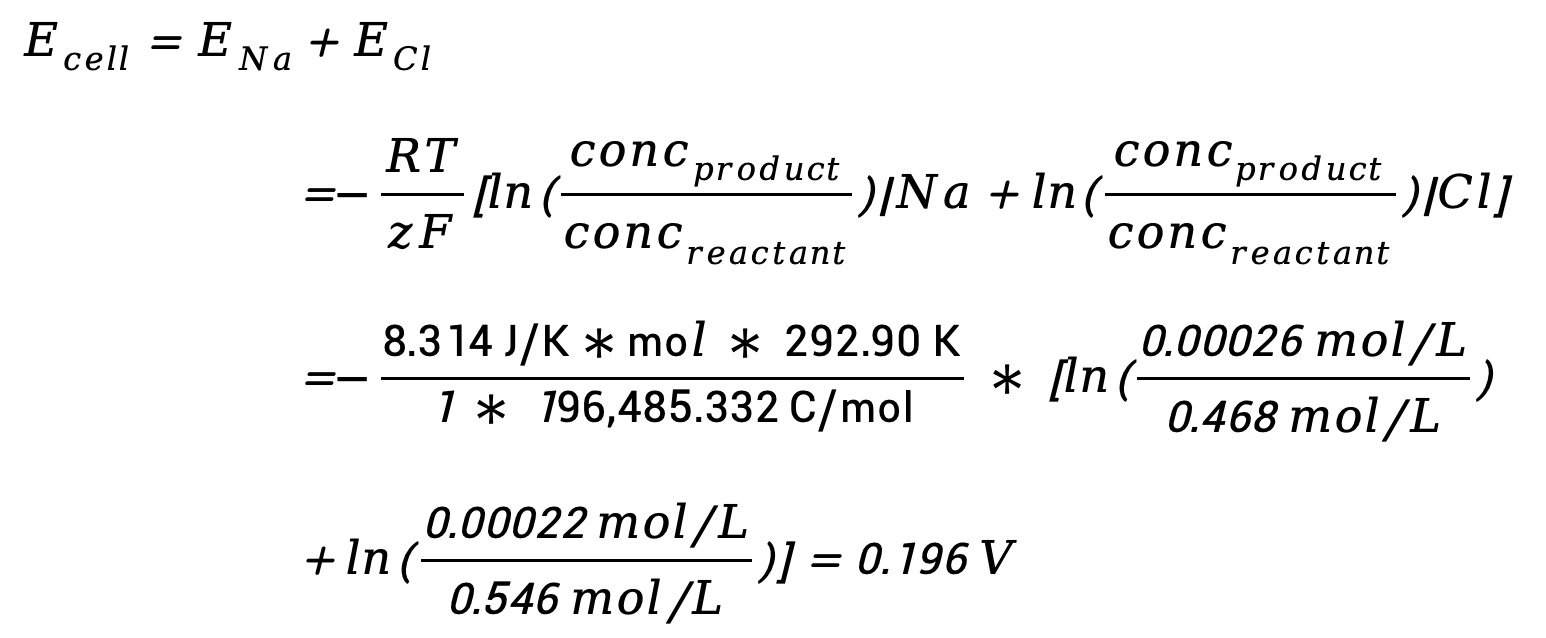
And the under the conditions of the water temperature in the winter and 100 meters under sea level, the potential voltage per cell will be:
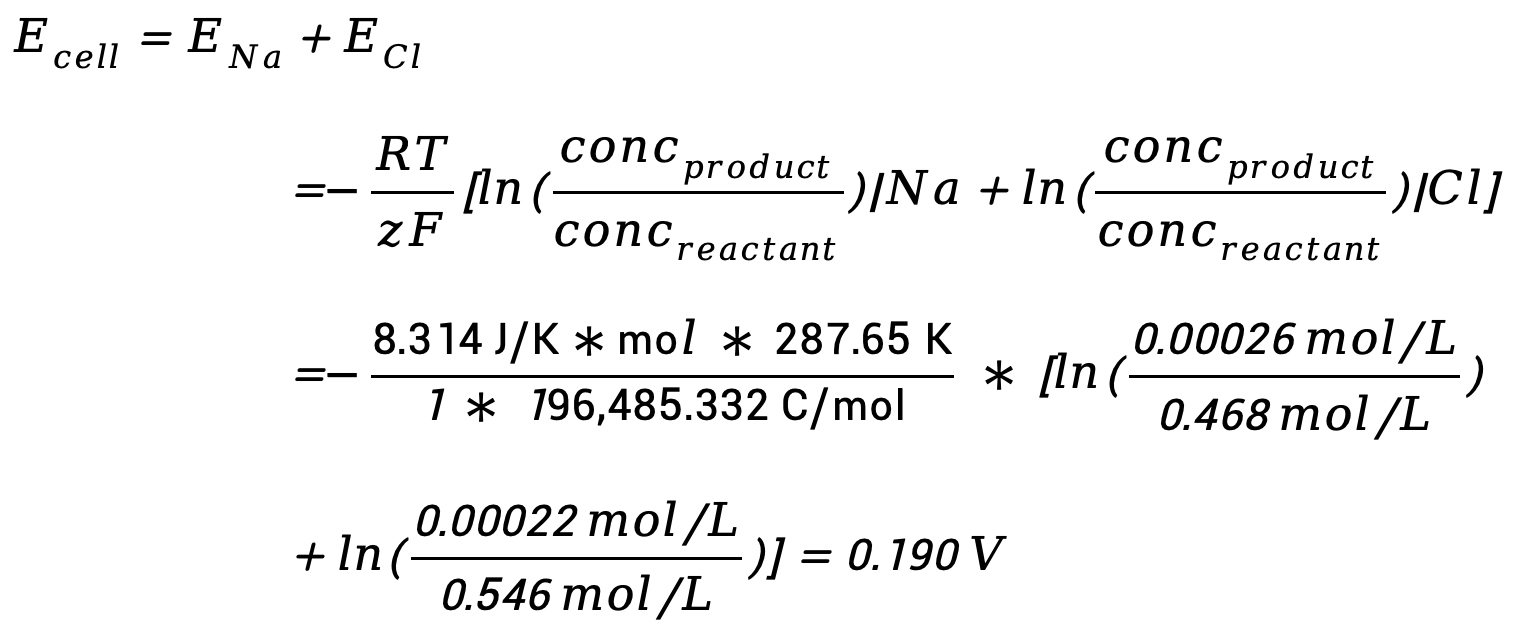
According to this calculation, to achieve the 24V needed for the ROV, at least 123 cells have to be in series with each other.
Current Calculation
For the current, since FAP-450 and FS-940 membrane is used, and the rate at which the ions flow through the membrane is 7.68 C*s^-1*cm^-2 (A*cm^-2) To achieve the current needed to power the ROV, the ions have to flow through the membrane at rate of 10 A meaning 10 C/s. Then, divided by the rate of current flowing through per square centimeter of the membrane, we get a minimum requirement 1.302 cm^2 membrane in total.
Power Calculation
Using P=IV, we can calculate the power of the cell, the rate which energy can be extracted at, by plugging in the current and the voltage.
Object to Power
Table 2
| Object |
Requirements |
Description |
| ROV Firefly |
24V 10A |
The Firefly ROV is a remotely operated vehicle that is used for nuclear outage support and underwater inspection. It is a small, portable system that can penetrate through narrow spaces and operate in areas of high radiation. It has a camera, lights, and thrusters that allow it to maneuver and capture images underwater. It is designed by Deep Ocean Engineering, a company that specializes in underwater drones. The Firefly ROV is one of the most advanced and reliable devices for nuclear and underwater applications. |
| Underwater Camera SeaLife Micro 3.0 |
5V 1A |
The SeaLife Micro 3.0 is a waterproof camera that can be used for underwater photography and video. It has a 16MP sensor, a 100° wide angle lens, and can record 4K video at 30fps or 1080p video at 120fps. It also has 64GB of internal memory, WiFi, and various modes and filters to enhance the underwater images. It is permanently sealed and leak-proof, so there is no need to worry about flooding or maintenance. It can dive up to 200 feet (60 meters) and is easy to operate with its “Piano Key” controls. It is ideal for capturing the beauty and diversity of marine life and environments. |
Cost calculation
The total cost of our product is as follows: anionic/cationic membranes cost $28 per square centimeter, respectively; microfiltration membranes cost $8.6 per square meter; sand filters cost $2 per square meter; glass tubes with a cross-sectional area of 2.5 square centimeters and a length of 50 centimeters cost about $18; and a set of electrodes (involving sodium, chlorine, and copper) cost about $2.076. Thus, the total cost per unit is about $641.6, which is relatively inexpensive for our target consumers. The system will work for at least one year and the annual maintenance cost will be about US $50.
Elements
Text
This is bold and this is strong. This is italic and this is emphasized.
This is superscript text and this is subscript text.
This is underlined and this is code: for (;;) { ... }. Finally, this is a link.
Heading Level 2
Heading Level 3
Heading Level 4
Heading Level 5
Heading Level 6
Blockquote
Fringilla nisl. Donec accumsan interdum nisi, quis tincidunt felis sagittis eget tempus euismod. Vestibulum ante ipsum primis in faucibus vestibulum. Blandit adipiscing eu felis iaculis volutpat ac adipiscing accumsan faucibus. Vestibulum ante ipsum primis in faucibus lorem ipsum dolor sit amet nullam adipiscing eu felis.
Preformatted
i = 0;
while (!deck.isInOrder()) {
print 'Iteration ' + i;
deck.shuffle();
i++;
}
print 'It took ' + i + ' iterations to sort the deck.';
Lists
Unordered
- Dolor pulvinar etiam.
- Sagittis adipiscing.
- Felis enim feugiat.
Alternate
- Dolor pulvinar etiam.
- Sagittis adipiscing.
- Felis enim feugiat.
Ordered
- Dolor pulvinar etiam.
- Etiam vel felis viverra.
- Felis enim feugiat.
- Dolor pulvinar etiam.
- Etiam vel felis lorem.
- Felis enim et feugiat.
Icons
Actions
Table
Default
| Name |
Description |
Price |
| Item One |
Ante turpis integer aliquet porttitor. |
29.99 |
| Item Two |
Vis ac commodo adipiscing arcu aliquet. |
19.99 |
| Item Three |
Morbi faucibus arcu accumsan lorem. |
29.99 |
| Item Four |
Vitae integer tempus condimentum. |
19.99 |
| Item Five |
Ante turpis integer aliquet porttitor. |
29.99 |
|
100.00 |
Alternate
| Name |
Description |
Price |
| Item One |
Ante turpis integer aliquet porttitor. |
29.99 |
| Item Two |
Vis ac commodo adipiscing arcu aliquet. |
19.99 |
| Item Three |
Morbi faucibus arcu accumsan lorem. |
29.99 |
| Item Four |
Vitae integer tempus condimentum. |
19.99 |
| Item Five |
Ante turpis integer aliquet porttitor. |
29.99 |
|
100.00 |













